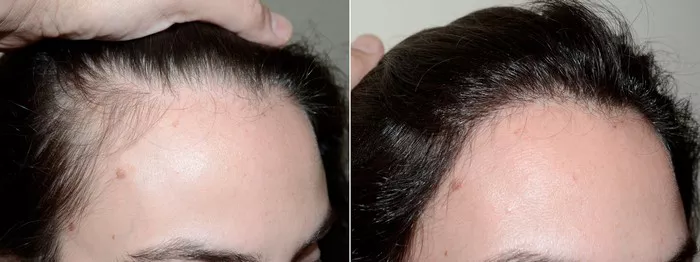Hair transplants have become a popular solution for individuals seeking to restore a fuller head of hair and regain confidence. While the procedure has advanced significantly in recent years, concerns about potential graft loss linger in the minds of prospective patients. In this article, we delve into the factors influencing the success of hair transplants and address the question: Can you lose grafts after the procedure?
Understanding the Hair Transplant Process
Before exploring the potential for graft loss, it’s crucial to understand how a hair transplant works. The two primary methods are Follicular Unit Transplantation (FUT) and Follicular Unit Extraction (FUE). In FUT, a strip of donor hair is removed and dissected into individual follicular units for transplantation. FUE involves extracting individual hair follicles directly from the donor area.
The extracted grafts are then implanted into the recipient area, where they are expected to establish a blood supply and grow as natural hair. The success of the transplant relies on various factors, including the surgeon’s skill, the patient’s suitability, and post-operative care.
Factors Influencing Graft Survival
Several factors contribute to the long-term success of a hair transplant, and understanding these can help manage expectations and minimize the risk of graft loss.
1. Surgeon Skill and Experience:
The expertise of the surgeon is paramount. A skilled surgeon will carefully harvest and implant grafts, minimizing trauma to the hair follicles. Proper technique significantly contributes to the survival of transplanted grafts.
2. Graft Quality:
The quality of the grafts extracted plays a crucial role. Healthy, robust grafts have a higher chance of surviving the transplantation process. The donor area’s health and density are essential considerations in ensuring the quality of the grafts.
3. Post-Operative Care:
The care provided after the transplant is equally important. Patients must follow post-operative instructions diligently. This includes avoiding activities that may traumatize the transplanted area, adhering to prescribed medications, and attending follow-up appointments.
4. Patient Health and Lifestyle:
The overall health and lifestyle of the patient can impact graft survival. Factors such as smoking, poor nutrition, and certain medications may negatively influence the success of the transplant. A healthy lifestyle can enhance the body’s ability to heal and support the growth of transplanted hair.
Potential Graft Loss: A Realistic Consideration
While the majority of hair transplant procedures are successful, it’s important to acknowledge that some degree of graft loss can occur. This is a normal part of the process, and experienced surgeons anticipate a certain percentage of grafts not surviving.
1. Shock Loss:
One common cause of graft loss is “shock loss.” This occurs when existing hair in the recipient area undergoes temporary shedding due to the trauma of the transplant. While this can be disconcerting, the lost hair usually regrows within a few months.
2. Graft Rejection:
Graft rejection is a rare occurrence but can happen. It involves the body’s immune system attacking and rejecting transplanted hair follicles. Proper screening of patients helps identify those at risk of rejection, and preventive measures can be taken.
Minimizing the Risk of Graft Loss
While some degree of graft loss is inherent in the hair transplant process, patients and surgeons can take steps to minimize the risk and optimize the outcome.
1. Choose a Qualified Surgeon:
Selecting a qualified and experienced surgeon is critical. Researching a surgeon’s credentials, reviewing patient testimonials, and examining before-and-after photos can provide insights into their expertise.
2. Follow Post-Operative Instructions:
Adhering to post-operative care instructions is vital for optimal recovery. Patients should avoid activities that may traumatize the transplanted area, take prescribed medications as directed, and attend follow-up appointments for monitoring.
3. Maintain a Healthy Lifestyle:
Adopting a healthy lifestyle contributes to overall well-being and can positively impact the success of a hair transplant. A balanced diet, regular exercise, and avoiding detrimental habits like smoking can enhance the body’s ability to heal and support graft survival.
See Also: [Reveal!] The Ideal Waiting Period for a Second Hair Transplant
Conclusion
Hair transplants have evolved into a sophisticated and effective solution for addressing hair loss. While the possibility of graft loss exists, it is crucial to approach the procedure with realistic expectations. Selecting a qualified surgeon, following post-operative care instructions diligently, and maintaining a healthy lifestyle are key components in ensuring the long-term success of a hair transplant. By understanding the factors influencing graft survival and taking proactive measures, individuals can enhance their chances of achieving natural-looking, lasting results. Consulting with a reputable hair transplant specialist and openly discussing concerns can provide valuable insights and foster a positive experience throughout the entire process.


